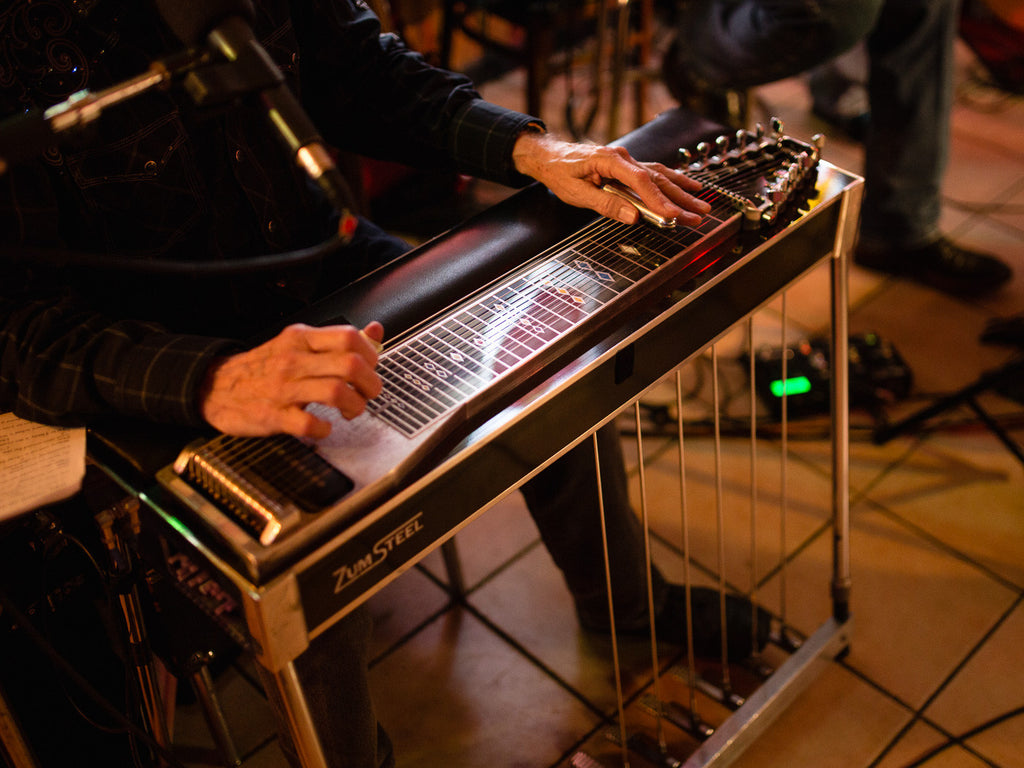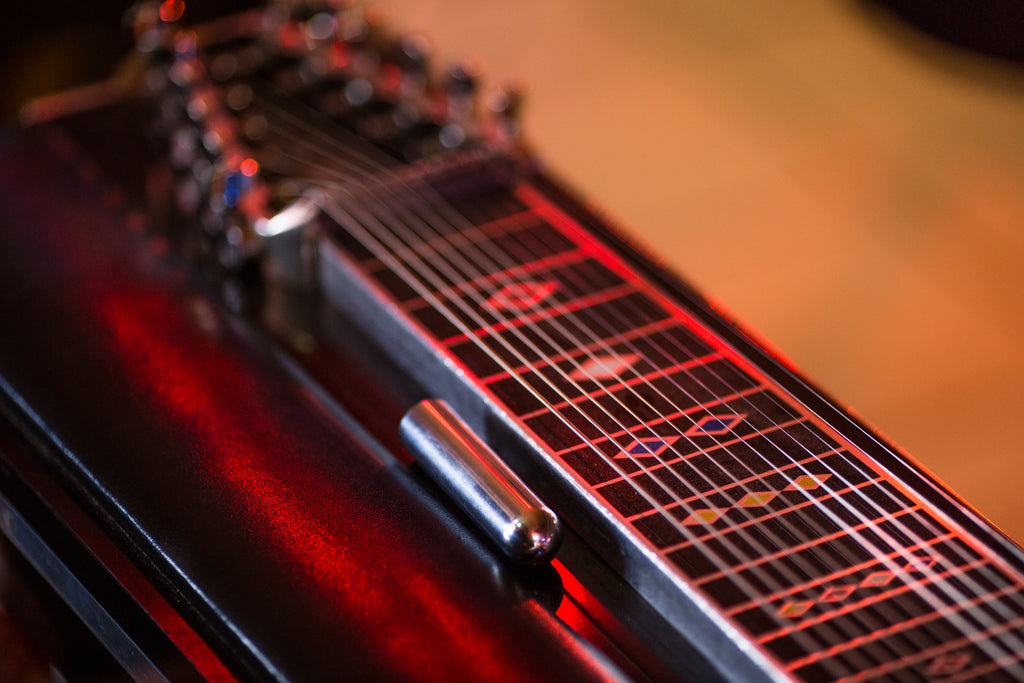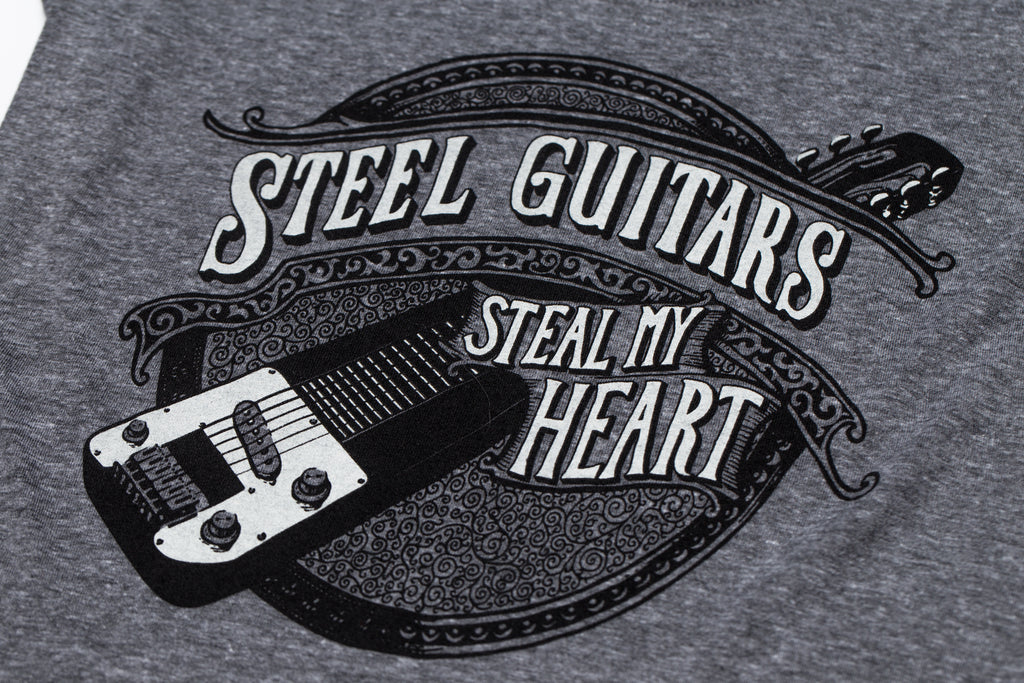Country music’s distinct appeal just might stem from its most overlooked instrument.
The Steel Guitar: The Instrument Behind Country’s Signature Sound

There’s something immediately familiar about the sound of classic country. We’ve all heard it—the layering of warm tones, subtle twang, and its alluring cadence. And though we may each have our own idea of what makes country ‘country,’ many of us will undoubtedly think of the distinctive and recognizable sound of the pedal steel guitar.
Yet while it’s characteristic sound creates the melodies in many of our favorite country songs, the instrument itself is arguably one of the least celebrated in the genre. Visually, it appears as a cross between a lap style guitar and an electric keyboard, complete with foot pedals similar to the piano. Yet in truth, the instrument is vastly more complex than a mere mash-up—it’s the product of a signature style in music history.

Ironically enough, the instrument that helped define country’s familiar sound throughout the decades evolved from somewhat foreign origins. Music historians have traced the pedal steel guitar back to the Hawaiian Islands, way back before country music even existed. Modifying classic 6-string guitars brought by European sailors, Hawaiian musicians developed a new playing style in 1874, where the instrument was played flat across the lap using metal fingerpicks and a cylindrical steel bar that slid up and down the neck.

It wasn’t until some 50 years later that this style of guitar made its debut in country music—and other genres as well (even inspiring blues artists to play their guitars with glass bottle necks, sawed-off pipes, and even knives). With this new style came a wave of musical experimentation and innovation, which gradually produced the pedal steel guitar we know today.

Perhaps the biggest step was in 1932, when the first production electric lap steel guitars were made. As the first-ever electric stringed instrument, amplification side-stepped the need for traditional acoustic guitars, so hollow guitar bodies were replaced by flat slabs of wood. Inspired by the new possibilities, musicians explored alternate tunings and even added extra necks or legs so they could play while standing.
Another innovation came later when Alvino Rey invented the “talking” steel guitar, which incorporated foot pedals that offered players a new layer of control to raise the pitch of each note. Then in 1952, player Zane Beck added knee levers to enable the player to also lower the pitch.

Of course, this endless realm of musical possibilities also makes the pedal steel guitar an extremely difficult instrument to master. Today’s pedal steel guitar requires players to use both of their hands, both of their knees, and both feet. Of course, this complexity may explain why the instrument is so often overlooked despite carving such an important role in the evolution of country music.

In spite of its complexity, the pedal steel’s potential is nonetheless being explored by a wide variety of artists across genres. In fact, you may be able to pick out the pedal steel in new ballads from rock bands like Kings of Leon or even the electro-inspired experimental songs of Björk—let alone in most of country’s top 10. Yet regardless of where you may find it, be sure listen in to experience the culmination of over 140 years of musical heritage.





Comments
Daniel M Tremblay:
So the steel guitar did originated in Hawaii and is making a great come back. See himele.org and steel trapping. The Hawaiian Steel Guitar Association HSGA.com is also paving the future of the Hawaiian Lap Steel Guitar. I enjoy playing wherever I can and whenever, people come up and state how wonderful the sound and the Hawaiian music (mele) is and many want to try it and when they do I create new steel guitar players. Our goal is to get 200,000 plus players like there were back in the 20s and 30s see page 187 of “Kika Kika How the Hawaiian Steel Guitar Changed the Sound of Modern Music” by John W. Troutman
Aug 20, 2019
bernard GLORIAN:
FINE PAGE !! great pics indeed ! Keep steelin’ !!!
all the best from france,
bernard PSG Player (also jazz blues bossa guitarist)
https://www.facebook.com/bernard.glorian1
Aug 09, 2016
Dixson Rudolph:
What about Bud Isaacs, whose song “slowly” first used a pedal to change the pitch of a string ( in 1954) and set the stage for the world of pedal steel?? How did Zane Beck predate this by using a knee lever??
Aug 09, 2016
Dixson Rudolph:
What about Bud Isaacs, whose song “slowly” first used a pedal to change the pitch of a string ( in 1954) and set the stage for the world of pedal steel?? How did Zane Beck predate this by using a knee lever??
Aug 09, 2016
Leave a comment